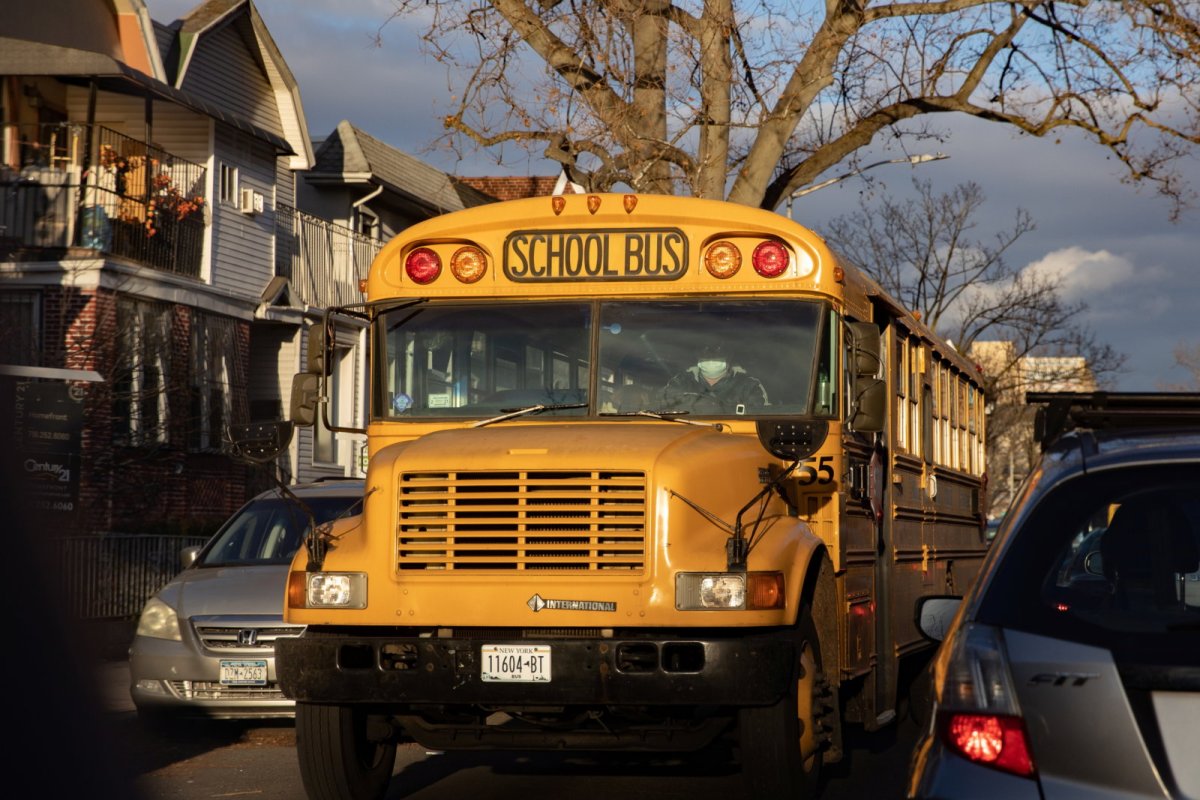By Leah Meredith, Policy Principal at Advanced Energy Economy
With more than 45,000 traditional school buses on the road, New York has the largest school bus fleet in the country. That makes the Empire State the perfect candidate to make the jump from diesel to emissions-free school buses. Earlier this year, Gov. Kathy Hochul committed to fully electrifying New York’s school buses by 2035. Now, with the measure included in the 2022-23 state budget that passed earlier this month, New York will become the first state in the nation to deliver the resources schools need to provide 100 percent clean rides for kids.
Access to immediate funding for school bus deployment is one of the most important measures lawmakers can offer school districts, and the Senate and Assembly have each offered their own budget proposals to make New York’s 2035 target a reality. It’s imperative that New York’s operating budget set aside dollars to help purchase these buses and the charging infrastructure schools will need to support them.
In addition to the obvious public health and environmental benefits of eliminating diesel fuel emissions, electric school buses offer school districts significant operational savings. While the upfront cost of purchasing an electric school bus is still higher than that of a diesel one, an electric school bus cuts fueling and maintenance costs in half over the vehicle’s lifetime, putting more money back into New York classrooms. Given the rising cost of fuel nationwide, this is a smart investment in our school districts and students’ future.
Electric school buses are already proving to work for New York schools. Long Island’s Copiague School District, for example, has been using electric school buses since 2016 and, thanks to an incentive program from NYSERDA and Con Edison, White Plains Public Schools also brought on electric school buses in 2018. But that leaves the bulk of New York school districts still in need of assistance to get students aboard these buses and unlock their cost savings.
While both houses of the legislature support school bus electrification, it is the Senate’s budget plan that provides school districts with the best path forward. The Senate proposes $1 billion for school and transit bus electrification through an expanded environmental bond act that will go before voters in November. The bond act also allocates at least 40 percent of the funds to disadvantaged communities. This equity-focused funding is critical for getting students of all economic backgrounds into cleaner school buses and giving all school districts a fair shot at affordably achieving the 2035 goal. The Senate also offers an extension of the amount of time school districts can lease electric school buses—to 15 years from five—allowing schools to reap even greater cost benefits as operating savings accrue over time. Technical assistance from NYSERDA, along with a clear implementation plan is another essential feature of the Senate proposal that will empower school districts through the electric transition.
New York still has a long road ahead to guarantee all school children can access clean transportation by 2035, but Gov. Hochul’s announcement has already sent the critical signal to the advanced energy industry that New York remains on the cutting edge of an increasingly competitive vehicle electrification market. Backed by the state budget, New York can now solidify its leadership in the electric transportation transition by putting its schoolchildren first.
Advanced Energy Economy (AEE) has been working for several years to speed up electric school bus adoption in New York. AEE worked with state legislators (Assemblymember Fahy, Sen. Kennedy, and more) to author and introduce bills that provide essential funding for school districts to make the switch, advocated for the buildout of critical charging infrastructure needed to make it happen, and then led a coalition that resulted in Governor Hochul solidifying an ambitious 2035 clean school bus target. Now AEE is working to make sure NY schools can affordably and equitably leave diesel buses behind. That means implementing tiered incentives for schools most in need, securing dollars to cover the upfront costs, and allowing districts to lease these buses for longer amounts of time so they can reap the long-term savings.
































